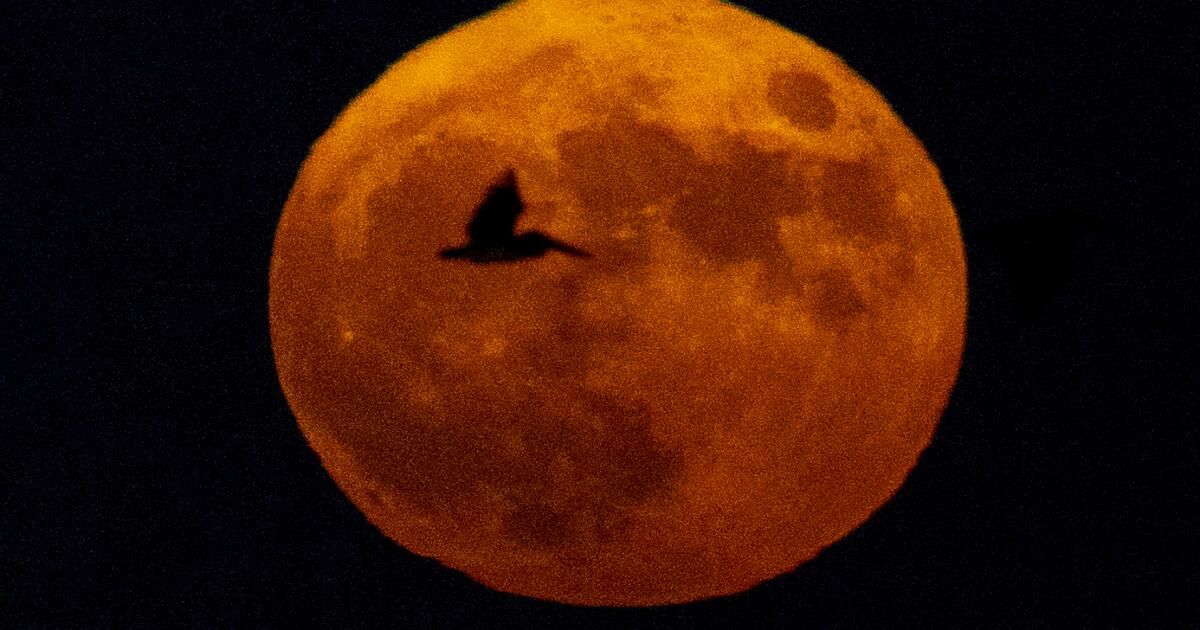The lunar cycle is about to enter a period that will show some of its most spectacular aspects: on August 19, four consecutive months of supermoons will begin: the largest and brightest full moons of the year.
“Two or three supermoons in a year is pretty normal, but four in a row is unusual,” said Tim Thompson, science director at Mt. Wilson Observatory.
Supermoons are full moons that coincide with the Moon's closest approach to Earth in its orbit (a point known as perigee), making the Moon appear about 14 percent larger and 30 percent brighter than the faintest moon of the year, according to NASA.
Although some say this is a singular event of the year, most experts consider a supermoon to be any full moon that is within 90% of its closest approach to Earth, which is why several can occur in a year.
The August and November supermoons will be about 360,000 kilometers from Earth, while the September and October supermoons will be a bit closer, at about 356,000 kilometers. Thompson called the latter a “very close lunar perigee.”
October's supermoon will be a bit closer than September's, or the most supermoon-like of supermoons, said Noah Petro, project scientist for the Lunar Reconnaissance Orbiter at NASA's Goddard Space Flight Center. However, he told an amateur observer that the slight difference between the four supermoons will be really hard to notice.
“It's a subtle difference, but it's an excuse; that's the important part… [that] “It makes people interested in looking at it,” Petro said. “It’s the gateway moon.”
The four supermoons will occur on August 19, September 18, October 17, and November 15.
August's full moon will be particularly special as it marks both a supermoon and a blue moon, often called a super blue moon, a rare coincidence.
This supermoon is considered a blue moon not because of the expected color changes, but because it will mark the third full moon in a season with four full moons, Petro said. A full moon is also considered a blue moon when it is the second full moon in a single month, creating two definitions for monthly and seasonal blue moons. This month's moon will be a seasonal super blue moon.
There are no visual differences for a blue moon.
But Petro urged people not to get hung up on specific dates, noting that any night is a good night to observe the moon, try to spot differences and simply enjoy the wonder.
“That’s the beauty of the moon’s phases, they repeat,” he said. Astronomers also noted that the three days around supermoons will still appear full.
While supermoons have generated a lot of excitement in recent years, there is a much rarer and little-known phenomenon occurring related to the lunar cycle: the Great Lunar Standstill.
The Moon, which occurs only every 18.6 years, is now reaching the extremes of its orbit, marked by its northernmost and southernmost rising and setting positions, extending beyond those of the Sun, and occurring over a period of about two years.
“It’s rising farther south than the winter solstice sun,” said Vanessa Alarcon, an astronomical observer at Griffith Observatory. “It’s actually pretty impressive when you see it.”
Griffith Observatory has moonset lines on its lower West Terrace, which pinpoint the exact points on the horizon where the greatest lunar standstill will occur. But anyone can observe it by looking at where the moon rises on the eastern horizon and where it sets on the western horizon, Alarcon said. It's best seen during a full moon, but the phenomenon will continue through much of 2025.
“Enjoying [the phenomena] “The ultimate goal is to see the supermoons,” Petro said, adding that there is no right or wrong place to watch them and that people should not be discouraged if they cannot attend on the specific date or if the weather is bad.
“That’s the beauty of the moon phases, they say,” Petro said. “Dust off the binoculars, find those telescopes and make an event of it.”
International Moon Observation Night will take place on September 14, a few days before the September supermoon.












